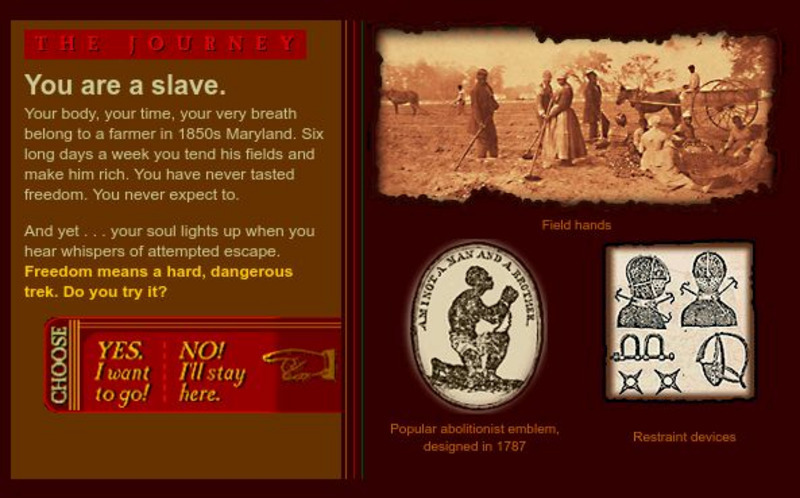National Geographic
National Geographic: Geostories: The Ab Cs of Mp As
Each slide in this GeoStory includes information about an aspect of a marine protected aea, as well as a link to related content from National Geographic Education.
National Geographic
National Geographic: Geostories: The Geography of Jazz
Explore this Geostory as it traces the roots of jazz from its humble beginnings in the southern United States to becoming one of the most widely recognized musical styles in the world.
National Geographic
National Geographic: Geostory: The 80s: The Decade That Made Us
Use this interactive Geostory module to relive the political, environmental, and pop cultural moments that made the 1980s an important time in U.S. history.
National Geographic
National Geographic: Continental Divide
A photographic encyclopedia entry defining and showing examples of a continental divide, the Great Divide and the Andes Mountains being the most prominent.
National Geographic
National Geographic: Reading a Resource Map
Students will study maps to recognize where natural resources are found through exercises provided.
National Geographic
National Geographic: Analyze a Community Map
Understand the map of a community and recognize the strategies developers have in placing public services in specific locations throughout the town.
National Geographic
National Geographic: Earth's Water Cycle
In this lesson, students draw and write about the water cycle, then discuss the important role the oceans play. Includes links to online resources.
National Geographic
National Geographic: Time Period Clues
In this lesson, students examine photographs from different time periods in American history and try to put them in order on a timeline. Includes a worksheet and a vocabulary list with explanations.
National Geographic
National Geographic: Our Hydrosphere
After learning about the Earth's hydrosphere and its major components, students look at the interconnections within the hydrosphere and with humans. Includes a vocabulary list with definitions.
National Geographic
National Geographic: Climate
An encyclopedia entry defining and giving examples of climates. Learn how a climate is related to its weather. Entry contains both pictures and vocabulary.
National Geographic
National Geographic: Planet Food: Explore the World Through Food
Students discover their own global food network by playing "Planet Food"-a two-part interactive game that introduces the concepts of interdependence and globalization through the geography of food.
National Geographic
National Geographic: Celebrate Geography Awareness Week
Geography Awareness Week (GAWeek)was created in 1987 as a time for families, students, teachers, and the general public to promote and celebrate the study of geography.
National Geographic
National Geographic: On the Trail of Captain John Smith
Animated media with accompanying text guides students through the story of Captain John Smith and his Jamestown adventures.
National Geographic
National Geographic: Global Closet Calculator
Play this two-part interactive game to understand the interdependence and globalization of manufactured goods. By using the clothes in the closet, map out where the clothing is manufactured. The second part of the game investigates...
National Geographic
National Geographic: What the World Eats
National Geographic presents a visual application to illustrate what types of daily diet caloric intake is from 1961-2011. Views of the whole world and breakdowns of individual nations are shown.
National Geographic
National Geographic: Extreme Weather on Our Planet
This lesson from National Geographic for grades 2-5 has a great photo gallery and video of extreme weather, and a chart for plotting weather investigation. Learning objectives, teaching methods, and connections to National Science...
National Geographic
National Geographic: Build a Magnetometer
Hands-on project where the learner constructs a magnetometer to monitor and measure changes in earth's magnetic field. These changes can then be used to track solar storms.
National Geographic
National Geographic: Geostories: Peace Corps
In this Geostory, join the Peace Corps and learn about the "Toughest Job You'll Ever Love."
National Geographic
National Geographic: Terminal Velocity
Researchers compare the terminal velocity of humans to peregrine falcons in hopes to increase top speeds in human extreme skydiving.
National Geographic
National Geographic: Why Communities Move
Why do communities move? In this activity from National Geographic, students learn what causes groups of people to to move from or be attracted to areas. Students learn how these concepts play into their own local communities, and forces...
National Geographic
National Geographic: Geostories: Geography on the Job
Each story point in this Geostory includes images, a short bio, and an interactive mapping tool that allows students to see the regions where geography work takes place.
National Geographic
National Geographic: Underground Railroad: The Journey
Interactive resource in which students choose their fate by making their own decisions as they travel the Underground Railroad.
National Geographic
National Geographic: Blog: "Fairy Circles" Explained
This article describes how termites create circular patterns of bare soil known as "fairy circles" in the grasslands of southern Africa.
National Geographic
National Geographic: 44 Bce: Julius Caesar Assassinated
The Ides of March is one of the most memorable dates in history. Read a short synopsis of why Caesar was assassinated. Did the senators achieve their goal?























